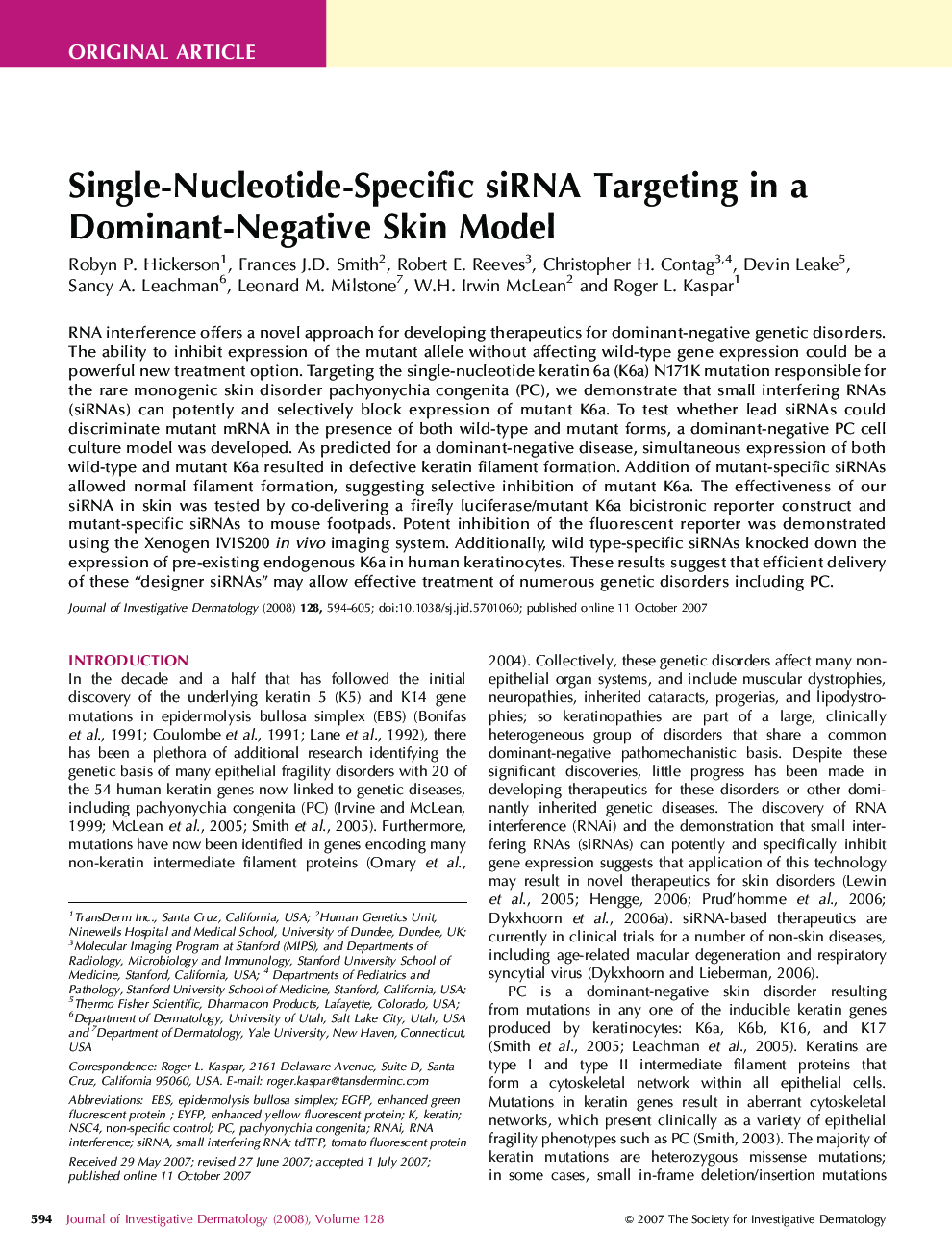| Article ID | Journal | Published Year | Pages | File Type |
|---|---|---|---|---|
| 3216702 | Journal of Investigative Dermatology | 2008 | 12 Pages |
RNA interference offers a novel approach for developing therapeutics for dominant-negative genetic disorders. The ability to inhibit expression of the mutant allele without affecting wild-type gene expression could be a powerful new treatment option. Targeting the single-nucleotide keratin 6a (K6a) N171K mutation responsible for the rare monogenic skin disorder pachyonychia congenita (PC), we demonstrate that small interfering RNAs (siRNAs) can potently and selectively block expression of mutant K6a. To test whether lead siRNAs could discriminate mutant mRNA in the presence of both wild-type and mutant forms, a dominant-negative PC cell culture model was developed. As predicted for a dominant-negative disease, simultaneous expression of both wild-type and mutant K6a resulted in defective keratin filament formation. Addition of mutant-specific siRNAs allowed normal filament formation, suggesting selective inhibition of mutant K6a. The effectiveness of our siRNA in skin was tested by co-delivering a firefly luciferase/mutant K6a bicistronic reporter construct and mutant-specific siRNAs to mouse footpads. Potent inhibition of the fluorescent reporter was demonstrated using the Xenogen IVIS200 in vivo imaging system. Additionally, wild type-specific siRNAs knocked down the expression of pre-existing endogenous K6a in human keratinocytes. These results suggest that efficient delivery of these “designer siRNAs” may allow effective treatment of numerous genetic disorders including PC.
